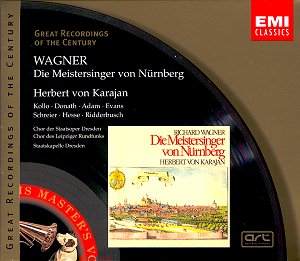 Composer: Charles Lecocq
Composer: Charles Lecocq
Works: La Fille de Madame Angot (1872, complete, with dialogue in French)
Performers: Mady Mesplé (Clairette), Bernard Sinclair (Ange Pitou), Charles Burles (Pomponnet), Christiane Stutzmann (Mademoiselle Lange), Denise Benoit, Michel Roux, Jacques Loreau, Gerard Chapuis, Choir of the Théâtre National de l’Opéra de Paris, Orchestre du Théâtre National de l’Opéra de Paris/Jean Doussard
Recording: Paris, 1973
Label: EMI
Charles Lecocq occupies a unique niche within the French operatic landscape of the late 19th century, deftly navigating the waters of light opera with his most celebrated work, La Fille de Madame Angot. Premiering in 1872, this operetta showcases the vivacity and charm that characterized the genre, which had blossomed in France amidst a cultural climate that yearned for escapism and entertainment following the upheavals of the revolution. Lecocq’s ability to craft engaging melodies and witty dialogue resonates through this work, enabling audiences to embrace a narrative centered on the delightful escapades of Clairette, the daughter of the titular Madame Angot.
The performance led by Jean Doussard and the illustrious Orchestre du Théâtre National de l’Opéra de Paris breathes life into Lecocq’s score with a vibrancy that is both infectious and polished. Mady Mesplé, as Clairette, delivers a performance that is the epitome of French operatic style, her clear, agile soprano weaving through the intricate melodic lines with grace. Her rapid vibrato and light timbre allow for an interpretation that is both expressive and engaging, particularly in her poignant solos such as “Certainement, j’aimais Clairette.” Bernard Sinclair’s portrayal of Ange Pitou complements her efforts admirably; his robust baritone resonates with warmth and energy, particularly highlighted in the ensemble numbers where his character’s intentions and affections become palpably clear.
The orchestration, while reflecting some of Offenbach’s influence, is notably more intricate, avoiding the monotony that can sometimes plague the lighter operatic fare. Lecocq’s skill as a melodist shines through in numbers like Pomponnet’s joyous “Aujourd’hui, prenons bien garde” and the stirring “Tournez, tournez” of Act 2, which showcases not only the composer’s gift for melody but also his ability to engage the audience with rhythmic vitality. A particular highlight is the overture, which Traubner rightly praises as one of the finest in the operatic canon, setting an anticipatory tone that permeates the subsequent acts.
The recording quality of this 1973 EMI release benefits from meticulous engineering, preserving the clarity and nuance of both the vocal and orchestral elements. The sound is full and robust, allowing the listener to appreciate the intricate interplay between soloists and the ensemble. However, the indexing issues noted in the track listings may detract slightly from the overall experience, as abrupt transitions can disrupt the flow of the narrative. This reissue, despite its shortcomings in documentation, effectively captures the essence of Lecocq’s operetta, allowing modern audiences to appreciate a work that has regrettably fallen into obscurity.
Lecocq’s La Fille de Madame Angot, with its delightful melodies and engaging narrative, serves as a testament to the enduring appeal of opéra comique. The performances captured in this recording are not only commendable but also essential for understanding the development of French operetta in the 19th century. This particular interpretation, with its vibrant orchestration and skilled vocalism, positions itself as a significant entry in the discography of operatic works, inviting both seasoned aficionados and new listeners to rediscover its charms.



